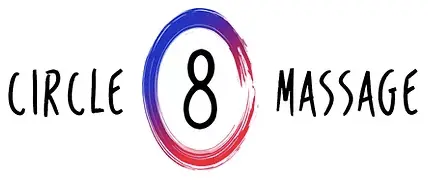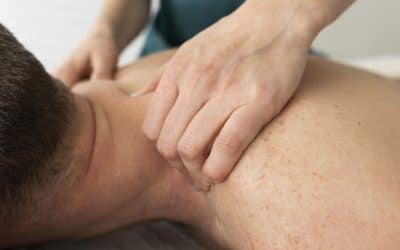Have you been hurting all over for years and constantly feeling exhausted? You may have seen various doctors to no avail, too. It’s frustrating; however, you finally see a doctor who understands and makes the right diagnosis. They determine you have fibromyalgia. You finally have a diagnosis, only to learn there’s not much they can do to treat this condition.
Unfortunately, there is no “magic cure” for fibromyalgia, so what can you do? One way to find relief is to visit a physical therapist, like Circle 8 Massage. We have found treatments that have proven success rates in relieving the symptoms of this condition.
In this article, we’ll look at what fibromyalgia is, the symptoms of this disorder, and some treatments that may help relieve your symptoms.
What is Fibromyalgia?
Fibromyalgia is a chronic health condition that causes widespread pain and tenderness throughout the body. It causes musculoskeletal pain and fatigue that can be quite debilitating. For some patients with fibromyalgia, their symptoms may come and go or cause flare-ups (when their symptoms are worse). Some patients experience daily pain, while others may experience pain at different times. The condition can be unpredictable, exhausting, and challenging. But the medical community recognizes that fibromyalgia is a real condition.
Scientists and doctors are sure precisely what causes fibromyalgia. However, studies have shown that certain health issues, stress, and other life experiences may trigger the painful disorder. In addition, fibromyalgia seems to have some genetic components; your chances of developing the condition increase if one of your biological parents has it.
Who Can Develop Fibromyalgia?
Anyone can develop fibromyalgia. It affects people of all ages (including kids). Women (people who have been assigned female at birth) and people over 40 are more likely to develop the condition.
The risk factors for this condition can include:
- People over 40 (though young kids can also develop this condition)
- Females (those assigned female at birth) are 2x as likely to develop fibromyalgia
- Chronic illnesses (people who have conditions such as osteoarthritis, depression, anxiety, chronic back pain, and more)
- Infections
- Stress
- Traumas (physical or emotional trauma)
What are the Symptoms of Fibromyalgia?
The most common symptoms of fibromyalgia can include:
- Muscle pain & tenderness
- Fatigue (exhaustion)
- Face & jaw pain (Temporomandibular joint disorders)
- Headaches & migraines
- Digestive issues (diarrhoea & constipation)
- Bladder control issues
- Memory issues (also called “brain fog” or “fibro fog”)
- Anxiety
- Depression
- Insomnia and other sleep disorders
Flare-ups are times when the pain and other symptoms of fibromyalgia are worse. Flare-ups can be caused by:
- Emotional stress
- Changes in daily routine
- Changes in diet
- Hormone changes
- Not getting enough sleep
- Weather/temperature changes
- Getting sick
- Starting new medication or treatments
What Causes Fibromyalgia?
Experts are not sure what causes fibromyalgia; however, the condition does have genetic components. Certain genes inherited from your biological parents may make you more prone to develop fibromyalgia. This can mean that the disorder is passed down through families. However, that isn’t the only way to develop this condition.
Research also suggests that the nervous system is somehow affected (the central nervous system: brain & spinal cord). Certain injuries, arthritis, spine issues, and other physical problems may trigger fibromyalgia. The condition has also been shown to be triggered by certain illnesses, including viral infections caused by the Epstein-Barr virus and more.
How is Fibromyalgia Treated?
As noted earlier, there is no single treatment that works for fibromyalgia, and not all treatments work for every patient. Some of the most common treatments can include:
- OTC or prescription medications to relieve pain
- Exercise (such as stretches or strength training)
- Sleep therapy
- Cognitive behavioural therapy
- Stress management therapy
- Antidepressants
- Physical therapy
How Can Physical Therapy Help Fibromyalgia
Studies have shown that physical therapy can offer relief from fibromyalgia symptoms. The main goal of physical therapy is to reduce the pain and stiffness a patient is experiencing. This is done through a combination of strategies. Other goals are to reduce muscle spasms, increase energy levels, and improve pain management and sleep patterns.
Fibromyalgia symptoms can be relieved through pain management techniques. In addition, light massage techniques can be used to increase blood flow through the muscles of fibromyalgia patients. (Studies have shown that these patients usually have reduced blood flow to their muscles).
Another common symptom of this condition is the stiffening of muscles fascia. The fascia is a dense layer of connective tissue that surrounds each muscle. Adhesion can form between the muscles and the fascia, causing discomfort, pain, and restricted movement. Our therapists can use a technique called myofascial release that involves putting gentle pressure on the tissue until a release of tension happens. Our physical therapists can also stretch the fascia through manipulation, making it regain length and easing pressure.
Trigger point therapy is also effective at relieving knots in the muscle fibre, resulting in the release of tension. Light stretching and gentle yoga-type movements can also relax muscles after treatment.
In addition, we can also use TENS therapy to reduce pain in the short term and ease muscle tension. Manual lymph drainage therapy can also be beneficial in easing fibromyalgia symptoms.
Other Therapies for Fibromyalgia
We can also help you with occupational therapy. In this case, treatment is focused on activity modification principles. These can include working at a moderate pace, frequent changes in position/posture, resting before deep fatigue sets in, and more.
These therapies can be incorporated into fibromyalgia self-care, work, and hobbies.
How Else Can You Reduce Pain?
Physical therapy and self-care can both help to reduce the pain and discomfort of fibromyalgia. It’s understandable that a diagnosis of fibromyalgia can be upsetting, especially with no known cure for this condition. However, learning about your condition and how to modify your life can go a long way in helping you feel better.
As physical therapists, we work with you on your movements, easing pain & tension, and more. We’re also great listeners and offer emotional support, along with education, to help you manage your pain. We can explain when it’s best to use ice or heat, for instance, to ease the pain.
We’re here for you, and we can help reduce your symptoms through the therapies and care we have to offer. Don’t hesitate to reach out to make an appointment or call with questions—we’re happy to help you feel better!







